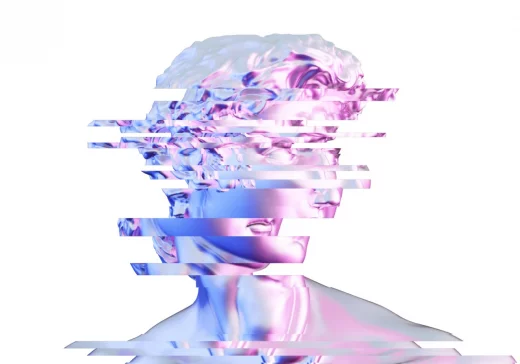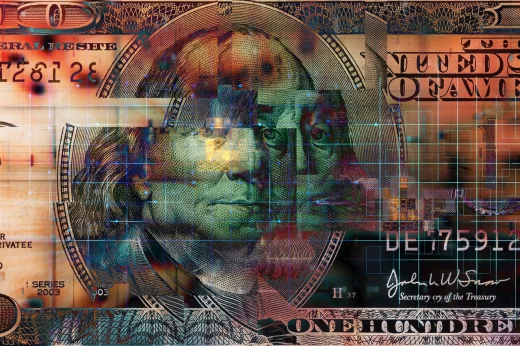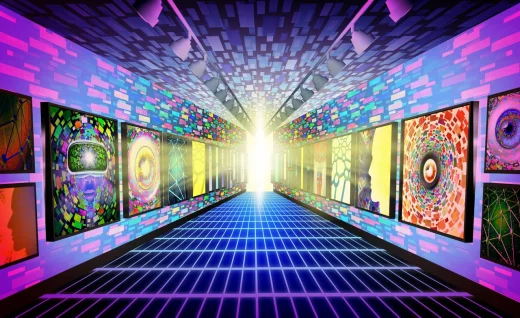
Introduction to NFTs and the digital art world
In recent years, Non-Fungible Tokens, or NFTs have revolutionized the world of art, creatives and social media content. NFTs are opening up new opportunities for collectors and investors (that we no one had ever thought of) by allowing artists to claim ownership of the unique art they create and sell.
In this article, we will cover everything you need to know about NFTs, from understanding what they are and why they're valuable, to providing a step-by-step guide on how to create an NFT, as well as expert tips for creating unique and eye-catching NFT art. We'll also discuss the costs involved in creating and selling NFTs, how to promote your NFT art and expand your audience, and important legal considerations to keep in mind.
What is an NFT and why are they valuable?

An NFT, or Non-Fungible Token, is a type of digital asset that represents ownership of a unique item or piece of content. Unlike cryptocurrencies like Bitcoin or Ethereum, which are fungible tokens and can be exchanged for one another, NFTs are non-fungible, meaning each one is distinct and cannot be replaced with another.
The value of an NFT comes from its uniqueness and the demand for it. Because each NFT is one-of-a-kind, collectors are willing to pay a premium to own a specific piece of digital art or content. Additionally, NFTs can also have utility or functionality, such as granting access to exclusive content or experiences, which can further increase their value.
NFTs have gained significant attention in recent years as high-profile artists, celebrities, and brands have entered the space, and some NFTs have sold for millions of dollars. This surge in interest has led to a rapidly growing market for NFT artwork, with new artists and collectors entering the space every day.
Potential pitfalls when creating NFTs – what can go wrong?
The biggest reason why most artists who are just starting out don't get to experience the limelight is because they underestimate the amount of effort required to launch a project to the stratosphere. There are a lot of moving parts, and it's not just about your creativity or artistic talent that determines the success of your project.
You might be seeing a lot of famous names such as Beeple and other well-known projects on the internet, but remember; these people started early and had certain advantages that you might not today. Just like the crypto market, the gains you can make on NFT sales are unpredictable (especially in the initial stages of your career) so it's wise to look at the potential downfalls and prepare yourself in advance.
Don't underestimate the required marketing effort
Marketing an NFT project takes time, patience and resources. Resources not only include your marketing budget but also the marketing talent you have at your disposal. If you only use traditional platforms such as OpenSea, Rarible or Instagram to promote your work, you will realize that it's simply impractical to try and do everything by yourself, you'll need people who are sold on your project to work with you, who will produce the marketing material required to lift your project off the ground.
However, this becomes a lot easier on modern platforms like Paysenger that uses a number of features to get your work in front of potential buyers and investors. Instead of putting your work up for sale to individual buyers (which takes a long time), it allows you to monetize it. You earn tokens for the engagement and attention that your content garners, in addition to profits you earn for making a sale.
Since the ownership of the NFT belongs to you, you also earn royalties for consecutive sales (when the buyer resells your work to someone else), so each NFT is treated like a long-term digital asset.
Legal considerations
In addition to marketing, it's worthwhile to think about the legal side of things to save you from the hassle in the future.
Copyright and intellectual property
Ensure that you have the necessary rights and permissions to create and sell NFTs based on your original artwork or third-party content. Unauthorized use of copyrighted material can lead to legal disputes and damage your reputation.
Contracts and agreements
When selling NFTs, it's essential to have clear contracts and agreements in place that outline the terms of the sale, ownership, and any additional usage rights or restrictions.
Tax implications
The sale of NFTs can have tax implications, depending on your location and the amount of income generated. Be sure to consult with a tax professional to understand your obligations and stay compliant.
Scams and fraud
The NFT market can be susceptible to scams and fraud, such as fake listings, phishing attacks, or stolen digital wallets. Be vigilant and take steps to protect your digital assets and personal information.
Have realistic expectations
It's true that some projects do go viral. But don't forget that those projects had a lot of working parts that helped them get their "lucky break" that you might not.
This includes factors such as:
Joining the market early
Just like crypto, people who were lucky enough to join the market early or at the right time did a lot better. Don't beat yourself up over this – there are still ways to create success in a predictable way. For you, it might take longer so stay strong and persevere through market difficulties until you find the right time to go all in.
Having an existing follower base
NFTs are nothing different from conventional art. Artists with a reputation in their communities tend to make big money on the most absurd pieces of arts. Just like collector items, the value of an NFT depends on the value the collector "perceives" it to have. In most cases, the value is attached to the reputation of the artist or the public perception of a piece. If you don't have an existing reputation, build it and your work will sell itself.
Joining growing platforms early
New crypto or NFT platforms offer you a great way to get your work some extra exposure at the expense of someone else. New projects are constantly marketing their platform, and all early joiners get to be a part of that initial exposure.
Try to be a part of new platforms such as Paysenger – it has relatively smaller user base which is growing exponentially on a daily basis. Join it and start putting out your work there before it becomes too big (and your work gets lost among a sea of content from other creators).
The process of creating an NFT: step-by-step guide

Creating an NFT can be a straightforward process, but it's essential to understand the steps involved to ensure a smooth experience. Here's a step-by-step guide on how to create an NFT:
Choose a platform
There are several platforms and marketplaces where you can create and sell NFTs. Research each platform's features, fees, and user base to decide which one is the best fit for your needs. Some of the most popular platforms include:
- OpenSea is one of the oldest, most standard NFT marketplaces that launched back in 2017. It hosts art, music, trading cards, photography, virtual worlds and much more. It charges a 2.5% transaction fee and you'll also have to pay a gas fee if you choose to complete transactions in Ethereum. Note: you can save gas fees by taking payments in Polygon, but you'll need to put a Polygon logo on your NFTs.
- Rarible uses its native token RARI to complete transactions. It charges 1% on buyer side and 1% on seller side on NFT marketplace sales. Another key feature of Rarible is that it takes votes from the community that influence company policy, so the company upholds a very decentralized mindset.
- Paysenger's NFT Marketplace works in tandem with Paysenger's social media features. The platform recently partnered with Polygon, and allows a multitude of features that allows creators to mint all of their work into NFTs. These NFTs can be conveniently moved from the social network to an NFT marketplace, and get traded and valued based on engagement levels from the community.
- SuperRare considers itself a "high-end digital art gallery". It reviews each submission and is very selective about the type of NFTs it presents. The platforms spend a lot of time reviewing each submission to provide investors more confidence to make better investment decisions. It charges a flat 3% on every transaction from the buyer's side.
Create your digital art
Using your preferred digital art tools, create your unique piece of art or content that you want to turn into an NFT. Try to stick to unique themes and trending topics. Art that creates or invokes a certain emotion in your audiences tends to get noticed. Add a personal touch, and express your inner self – there are definitely people out there with whom you'll resonate!
Mint your NFT
"Minting" is the process of turning your digital art into an NFT. This involves uploading your creation to the platform of your choice and adding relevant metadata, such as a title, description, and any additional attributes. Most platforms will require you to connect a digital wallet, such as MetaMask or Trust Wallet, to complete the minting process. Some platforms, such as Paysenger, automatically mint all of your content into NFTs so they can be openly traded on markets.
Set a price
Determine the price you want to sell your NFT for, keeping in mind factors such as the uniqueness of your creation, the demand for similar NFTs, and the platform's fees. In the early stages, don't concern yourself too much with the prices.
Your goal is to test the waters and get a taste of the first sale. You can determine the price later depending on how quickly it sold, the amount of attention it got and how people engaged with it on social media.
List your NFT for sale
Once your NFT is minted and priced, you can list it for sale on the platform's marketplace. Be sure to promote your NFT on social media and other relevant channels to attract potential buyers.
Remember, the highest amount of effort and money you'll spend will be on marketing. Make sure your marketing brand positioning is inline with the theme and values of your NFTs. The goal is to attract the type of audience that is interested in the particular theme or style your art exhibits. Using a similar style of marketing ensures that you reach the right audiences who will be interested in making a purchase.
Sell and transfer ownership
When a buyer purchases your NFT, the platform will handle the transaction and transfer ownership of the NFT to the buyer's digital wallet.
Successful NFT models that you can replicate for yourself
Marguerite deCourcelle, also known as Coin Artist, has made over $333,000 for her game studio, BlockadeGames with her flagship game, Neon District generating over $195,000 this year by monetizing NFTs as game assets. She has also made money selling her art as NFTs, raking in about $212,000 in 2020.
Adding utility to ingame collectibles using NFTs is taking off. A lot of developers are incorporating NFTs into their platforms so collectibles can hold real world value. Collectibles have been traded in the gaming industry for a long time already. For example, the Steam Marketplace has a plethora of ingame collectibles that are bought and sold using real world dollars.
However, those items only hold value for gamers who mean to use the items ingame or resell them. Now, imagine those items having real world value (even for those who are not gamers) and could be invested in just like stocks or art that grow in value over time – that's what NFTs help us achieve.
So this model can be incorporated into a number of different platforms where earned collectibles can be minted into NFTs and held as a potential digital asset. Paysenger uses this model too – instead of specific collectibles, all content posted on Paysenger can be minted into NFTs including photos, videos and audios because everything has monetization potential in the long-run.
Matt Kane is another artist who has found success through NFTs. He creates digital art that is inspired by nature and has sold pieces for thousands of dollars. You can also check out other artists, such as Drifter Shoots, Refik Anadol, Amber Vittoria, Dave Krugman, and Micah Johnson who sell digital art NFTs on Instagram.
Why all content on the internet should be minted
Content on social media has a big influence on world markets, industries and the economy as a whole. For instance, one tweet from Elon Musk can send the entire crypto market into a spiral, an Adriana Grande post can change the fate of entire beauty sectors, memes can create entire cultures and so on.
Depending on the influence a piece of content creates on world markets determines its value – however, there's no way to measure, buy, sell or trade that value. In addition, if multiple parties collaborate to produce a piece of content, it's hard to determine their shared ownerships. This is possible for music and film thanks to digital licenses and copyrights. However, we can't say the same for social media content.
If every piece of content on the internet gets turned into NFTs, creators will be able to get rewarded for their contribution and be able to cash in their work – opening infinite monetization opportunities. That's exactly what Paysenger does, by the way – all content on the platform is "mintable".
For the mass adoption of decentralized tech
Creators are constantly pushing out free content. This includes memes, viral videos and so on. The advent of NFTs allowed people to finally claim ownership to exclusive pieces of content. However, only some communities have been able to benefit from the technology such as the crypto community and other top-level investors.
For mass adoption of NFTs and relevant technology, it is absolutely vital for all internet content to have "ownership". Every piece of content, including memes, videos and social posts have a potential to get monetized.
Usually, it's only social platforms that benefit from the engagement that free social posts get and most small-to-medium creators don't earn anything. By empowering all internet content with the same "philosophy" and ownership mechanisms, internet creators can take back the control of the impact their content has and get rewarded. Additionally, several parties can collectively own a single piece of content and derive monetary and non-monetary benefits.
Tips for creating unique and eye-catching NFT art

To stand out in the competitive NFT market, it's crucial to create unique and eye-catching art that will attract buyers and collectors. Here are some tips to help you create your own NFT art that stands out:
- Find your niche: Identify a specific style, theme, or subject matter that sets your art apart from others. This can help you create a unique brand identity and attract a dedicated audience.
- Experiment with different mediums: Don't be afraid to explore different digital art mediums, such as 3D modeling, animation, or interactive experiences. This can help you create truly one-of-a-kind NFTs that stand out from traditional static images.
- Collaborate with other artists: Partnering with other artists can help you create unique and diverse NFTs, as well as expand your audience by tapping into your collaborator's fanbase.
- Incorporate scarcity and rarity: Create limited edition NFTs or implement varying levels of rarity within your collection to increase demand and perceived value.
- Tell a story: Use your art to convey a narrative or message, giving your NFTs a deeper meaning and emotional connection with potential buyers.
Building a successful NFT collection

Creating a successful NFT collection involves more than just producing eye-catching art. Here are some tips for building a collection that will appeal to collectors and investors:
- Create a cohesive theme: A consistent theme or style across your NFT collection can help establish your brand identity and make your collection more recognizable and memorable.
- Offer a variety of NFTs: Including a mix of different types of NFTs, such as static images, animations, and interactive experiences, can make your collection more appealing to a wider audience.
- Engage with your community: Building a strong community around your NFT collection is essential for long-term success. Engage with your audience through social media, forums, or dedicated Discord channels to gather feedback, answer questions, and build a loyal fanbase.
- Provide utility and value: Adding functionality or utility to your NFTs, such as granting access to exclusive content, can make your collection more attractive to potential buyers.
- Consider long-term growth: Plan for the long-term growth and development of your NFT collection by releasing new pieces over time, collaborating with other artists, or expanding your collection's narrative.
Understanding the costs to create and sell NFTs

Creating and selling NFTs can involve various costs, including platform fees, transaction fees, and the cost of minting the NFT. Here's a breakdown of some common costs associated with creating and selling NFTs:
- Platform fees: Many NFT platforms charge fees for listing and selling NFTs, which can range from a flat fee to a percentage of the sale price.
- Transaction fees: When minting an NFT or completing a sale, you may be required to pay transaction fees, also known as "gas fees," to the Ethereum network (or other blockchain networks, depending on the platform).
- Minting costs: The process of minting an NFT can also incur costs, which may include the platform's fees and any additional costs associated with creating your digital art, such as purchasing digital art tools or hiring a professional artist.
- Marketing and promotion: To attract buyers and collectors, you'll need to promote your NFT art, which may involve costs for advertising, social media campaigns, or hiring a publicist.
Conclusion
All in all, as a new entrant in the NFT market, you will be facing intense competition and might be surprised by the amount of time, effort and money it requires to launch a successful project. The biggest money-eating part of the project is going to be marketing. If you try platforms like OpenSea, your work might get lost beneath millions of other NFTs unless you have the marketing resources to compete with others.
If you think you might not have the same resources as a big project, try a platform like Paysenger which combines social media marketing as well as NFT marketplace features to help you get started. There are many ways to monetize your work on the platform – such as by offering paid on-demand content, collaborating with others or engaging with other people's content. Make your journey to become a successful NFT artist easier on Paysenger. Reach new audiences, collect payments, collaborate with other creators, find your niche and establish yourself as a successful entrepreneur on the world wide web. Download and try it for free today.
